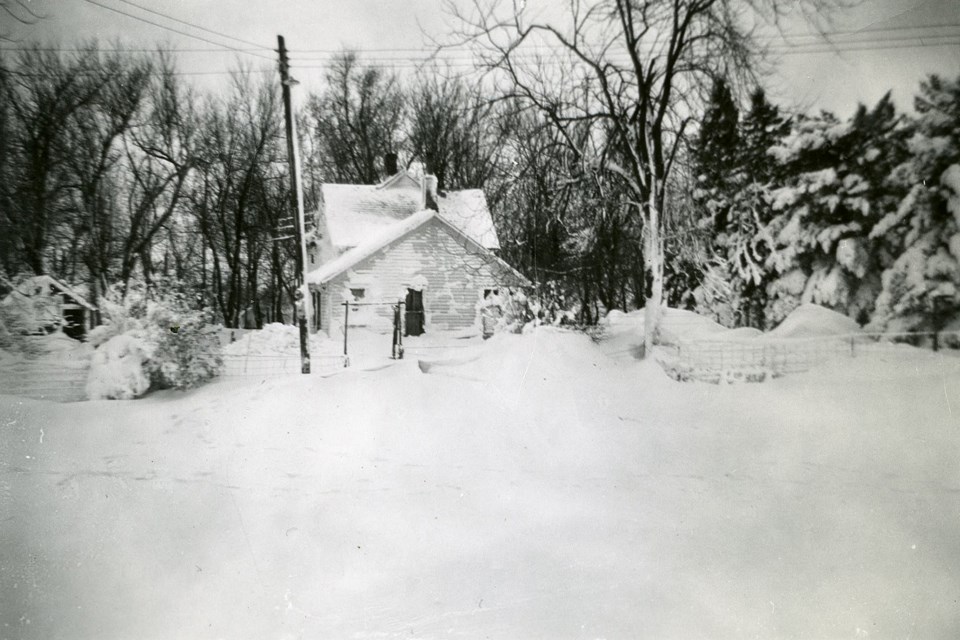Central Alberta has just experienced a bone-chilling cold snap. However, as bad as the weather became, it was still nowhere near as bad as the brutal winter storm of 55 years ago in mid-December 1964.
The winter had started innocuously enough. However, on Nov. 4, the famous local weather forecaster, Chief Walking Eagle, made an ominous prediction that the The weather turned cold and snowy near the end of November. There was a warm spell in early December, but it was to be the last for a long time.
On Sunday, Dec. 13, the weather office issued a warning that a major blizzard was on its way, with high winds and lots of snow. However, few people were prepared for what was about to take place.
By noon on Monday, the meteorologists at Penhold were reporting temperatures of -14 C (-7 F) and winds of up to 40 km/h. Wind chills were estimated at - 40 C. However, despite the severity of the weather, the worst was still to come.
Overnight, temperatures plunged to the low -30s. With the winds now gusting up to 70 km/h, the weather office was reporting wind chills at an astonishing -73 C (-100 F), the worst ever recorded in Alberta.
Central Alberta ground to a near standstill. A decision was made not to run any school buses. By mid-Tuesday morning any schools that had opened were ordered closed. The RCMP did all that they could to keep people off the highways. The police and other authorities strongly recommended that people just stay home.As the day progressed, the situation turned even more critical. A natural gas control valve at Nevis, east of Red Deer, froze up. As a result, gas pressure began to drop while consumption soared. Many people’s furnaces began to go out.
Northwestern Utilities issued an urgent request to all residential customers to turn their thermostats down to 15 C (60 F) in an effort to reduce consumption. Major industrial and institutional users were asked to start using standby heating systems that burned heating oil instead of natural gas.
People on farms and acreages also faced severe situations. The high winds and frigid temperatures turned propane to gel. Applying heat sources like open flames to thaw tanks was risky due to the risk of fire. Wells froze up causing a lack of water for humans and animals alike.
Problems were compounded by breaks in the power lines. Many areas were left without power for hours. Calgary Power (Transalta) began emergency plans to impose power rationing to deal with soaring demand and growing service disruptions.
Finally, by Tuesday evening, the winds began to abate. While it remained bitterly cold, conditions became less brutal.
There was a flood of news reports about the storm’s incredible effects. A man in North Red Deer, Clem Trimming, was found frozen to death in his house after his heater went out. A woman in Edmonton was found frozen to death in a parking lot after she had fallen and no one initially noticed her on the ground. Many people across Central Alberta were hospitalized with severe frostbite.
There were numerous reports of frozen pipes in local homes and businesses. A warning was issued to homeowners to check their vent pipes for blockages of ice and snow so that poisonous gases would not build up in their homes.
Just after the great blizzard, a near disaster occurred by the Innisfail Bridge across the Red Deer River. Twenty-seven head of Shorthorn cattle wandered out onto the river. Their combined weight caused them to break through the ice. Fortunately, the poor animals were soon spotted and farmers rushed to rescue them.
In short order, the cattle were pulled out of the frigid water and transported to a large nearby garage/shop. The efforts were largely successful as only one heifer lost its life in the ordeal.
For months afterwards, people swapped stories about the record-breaking storm. However, Hap Clarke, the editor of the Innisfail Province, helped to keep things in perspective by reminding people that 25 years previously (i.e. in February 1939), it had been -45 C to -50 C for most of a week.
Michael Dawe is a longtime revered Central Alberta historian and frequent contributor to the Innisfail Province.

